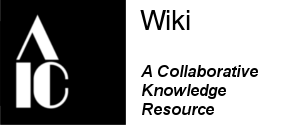Specular illumination
This page is currently under review.
Would you like to assist? Check out the Contributors' Toolbox to learn how you can help improving the IWG Wiki!
Specular illumination is an imaging method used to investigate and document the reflective properties of an object’s surface, such as the subtle topographical changes or the presence and extension of coatings and glazes.[1] While specular reflection and glare are typically avoided in other techniques, intentionally capturing and isolating the direct, mirror-like reflection of light allows for a more detailed examination of surface sheen, texture, and shallow indentations.[2] The effectiveness of this technique is reduced on matte or non-reflective surfaces, which is why it is used as a complementary tool, often combined with other methods to document a wider range of an object's properties.
Working principle[edit | edit source]
Specular illumination involves positioning a light source in a way to capture the direct reflection of light from the object's surface. There are two primary setups. In the axial setup the light source and camera are placed on the same axis, perpendicular to the object's surface. This setup is chosen to capture the overall sheen and can highlight abnormalities. In the oblique setup the camera and light source are positioned on opposite sides of the object, at the same angle relative to its surface.
The minimal equipment for this experimental setup includes:
- A camera,
- A tripod or a column with a camera mount,
- A prime lens,
- An IR & UV-cut filter to mount on the lens or in front of the sensor,
- Light sources emitting visible light,
- Light stands or other light mounts.
Additional recommended tools are:
- A neutral background,
- Light modifiers like softboxes and bounce cards,
- Mounting grips, arms, and clamps may be necessary to hold the target or bounce cards in place,
- A working station to control the session in tethering mode.
Technical limitations[edit | edit source]
The oblique setup is effective in revealing subtle tool marks and indentations, but it also has considerable limitations. The camera’s focal plane intersects the object’s surface at an angle, which can be solved by increasing the distance object-to-sensor to maximize the depth of field. Secondly, the resulting image documents the object with a notable perspective distortion, and therefore with potential loss of information.
Another noteworthy limitation pertains to regions of overexposure in the capture; these areas can be seen as both a flaw and a benefit since, although clipping results in a loss of data, those bright spots are essential for disclosing finer details.
General recommendations[edit | edit source]
Light sources should be as large as possible to maximize the light flooding across the object’s surface. LED panels, bounce panels and softboxes are commonly used light modifiers in specular reflection imaging.
Optimal exposure is determined by the ability to distinguish the features of interest, rather than by the target’s values. This is because the light intensity varies across the scene, hence altering the relative brightness of the color patches.
If the camera used for the capture has a low resolution, but a high level of detail is still desired, capturing only the area of interest as close to the object as possible can help overcome the technological disadvantage.
A neutral background usually helps delineate the object’s borders and focus the viewer on the work being photographed.
Further readings[edit | edit source]
Frey, Franziska S, Jeffrey Warda, Dawn Heller, Dan Kushel, Timothy Vitale, Gawain Weaver, and American Institute For Conservation Of Historic And Artistic Works. Digital Photographic Documentation Task Force. The AIC Guide to Digital Photography and Conservation Documentation. 3rd ed. Washington, DC: American Institute for Conservation of Historic and Artistic Works, 2017.
An all-round publication that comprises recommendations for numerous imaging methods used in conservation practices.
References[edit | edit source]
- ↑ Housel, Lindsey. “Cleaning Decisions Videos.” Denver Art Museum, November 28, 2012.
- ↑ Doji, Georgina. “Lighting Techniques.” Hamilton Kerr Institute, Fitzwilliam Museum. University of Cambridge, November 28, 2013.
| Browse by category | Community resources | Contributors' resources | Editors' shortcuts |
|---|---|---|---|
|
Community Portal |

